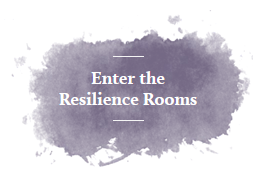Kids and teens are notoriously impulsive, and as they struggle to make changes to their eating and exercise behaviors, the mind plays a critical, if not the most important, role. Without ever learned what to do, they may not give themselves the time to mull over their thoughts about eating because they are reacting to them so quickly. Instead, as we can relate to as adults, they often try to rid themselves of their uncomfortable thoughts, either consciously or subconsciously, by avoiding them or acting on them impulsively. Additionally even if they are aware of those thoughts and take time to evaluate them, they might still decide they want to eat seconds on dessert because “it tastes good” and they “must have it.”
For example, a teenager struggling with her weight and trying to make changes might think, “Okay, I just ate dinner and dessert. I feel full, but I still want seconds on the dessert.” Then, she considers the options: “I know I just ate dinner but I still want it” or “Even though I’m full, there’s still more room for a bit more” or “Just this one time” or “I deserve it since I had a really hard day at school.” She will follow up by judging her thoughts “Why can’t I just control myself?” “Why do I have to think that it is just one time?” “Why can’t I realize that it is not just one more time? It’s all the time!” Then dread and hopelessness sets in, followed by giving up. They say, “I’ll never be able to do this” and “What’s the point?”
This series of thoughts about thoughts and feelings about feelings often lead her to feel shameful, guilty, and ineffective. This familiar vicious cycle directly negatively impacts on kids and teens self-confidence and self-efficacy. It most often leads to phases of starting and stopping healthful eating plans and thwarts long-term incremental healthful changes. The goal is for a lifetime practice and approach to healthful behavior which is inclusive of contemplation, processing, problem-solving, and acting mindfully with self-awareness.
Help Kids & Teens To Forge Healthful Eating By:
(1) Being a good role model for them. “Do as I say, not as I do” doesn’t work. Do not ask something of them that you are not acting upon yourself. Kids and teens do not appreciate hypocrisy and you lose your credibility with them when you are not following through yourself, or leading by example. Proactively seek opportunities to learn about nutrition, fitness, children’s biological, psychological, social development, etc. so that you can effectively understand and be personally helpful.
(2) Evaluating their hunger, cravings, triggers and if they emotionally eat. You can create charts with them that monitor when they tend to be the hungriest, what foods they seem to crave, what triggers them to overeat and whether or not their eating is prompted by any particular emotions (e.g., sadness, frustration, boredom, etc.). It is helpful to do this over a period of a week or two weeks to identify any variations or patterns in behavior.
(3) Identifying values connected to their healthful eating. As adults we want them to be prompted to do so because it will promote good health. Kids and teens may not be thinking about it quite in that way and tend not to be overly concerned about their physical functioning and mortality. Try to connect with values that personally matter to them such as agility in sports, the freedom to wear the clothing that they choose to, the independence to try out new physical activities, etc.
(4) Making them aware of the excuses and rationalizations they use related to their overeating. There are a litany of them that cross their mind that they either avoid, ignore or dismiss. Some of the more familiar ones are “But it tastes good”, “It’s a special occasion”, “Just this once”, “I’ll make up for it tomorrow”, “But it’s low-fat.”, etc. Remind them that this is their mind speaking, it may sometimes sabotage them because our minds have minds of their own.
(5) Creating space between their “thinking” and “doing.” This mindful practice requires that they pace themselves, observe themselves, and be curious about themselves non-judgmentally. Convey to them that ALL thoughts and feelings that show up in the process are okay, it is how they choose to act on behalf of them. That is inevitably THEIR choice.
(6) Helping them gain the ability to be comfortable with being uncomfortable. When we put effort into changing behaviors, it often comes with angst and feeling of discomfort. This is part of the process that they must accept, recognize and be willing to take on in order for change to effectively happen.
(7) Helping them to create distance from their sabotaging thoughts (you can role play with them):
Instead of Saying: “I need to have the cookie now!”
Reframe to Say: “I am having the thought that I need to have the cookie now.”
Instead of Saying: “I should drink the cola because everyone else is drinking it too.”
Reframe to Say: “I am having the thought that I should drink the cola because everyone else is drinking it too.”
(8) Assisting them in planning and problem solving through challenges. For example, help them to lightly predict their challenging thoughts, feelings and behaviors in given situations (e.g., going to a family dinner, a birthday party, etc.). Because we are evolving human beings and are impacted by many factors (i.e., how we are feeling physically, emotionally, socially, etc.) we can be unpredictable at times. Leave room for unpredictability too so that when a situation arises it can be effectively worked through.
Just like adults, kids and teens cannot control thoughts or feelings but they do have the ability to choose what actions they want to take. With your help and guidance, they can make decisions in regard to their health that are in line with their values and who they truly want to be. They can be empowered to make positive changes. They deserve that chance.
In Spring 2016, my book, “How To Free Your Child From Overeating”: 53 Strategies For Lifelong Chance Using Cognitive-Behavioral Therapy, Acceptance and Commitment Therapy & Mindfulness will be published. Look out for it for many more tips!



